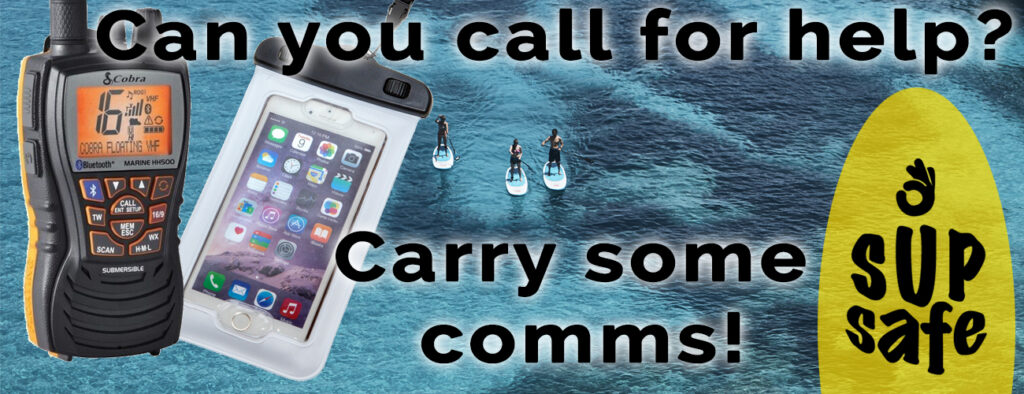In many parts of New Zealand it is now a legal requirement to carry comms on your SUP, so that you can call for help if necessary. Which makes total sense, since every year our emergency services have to rescue paddlers being swept offshore by strong winds or currents. (Not just at the coast, there are many rescues on our lakes too). Being able to call for help is a vital part of your safety strategy. This is why it has now become mandatory in many regions of New Zealand, and this summer it will be actively enforced, with fines for non compliant paddlers.
Here is an excerpt from the Auckland Regional Navigation Safety Bylaw:
A person using a paddle craft of six meters or less in length overall (for example kayak, stand up paddle board or waka) beyond sheltered waters, must [be capable of] communication using two independent forms of communication at any time with a land-based person from any area where the vessel is intended to be operated.
So how does this play out for SUP? We have to be practical with this, because our options are limited by the nature of our activity. It is NOT alright to have your comms methods strapped to your board, because losing your board means that you’ve lost your comms. So it has to be what you can carry, in a way that it won’t get knocked off or lost if you fall in, and/or when scrambling back onto the board.
Fortunately, the enforcement of this law is being done on a very realistic basis. If you are close inshore within easy hailing distance of people on the beach or shoreline then your voice and waving your paddle will be absolutely fine. You’re not going to get a ticket. If you’re within a few hundred metres of shore, and there are people around, a whistle is an excellent way of attracting attention, and is extremely easy to carry on your belt or in a pocket. Waving your paddle would realistically qualify as your second comms option. However, if you’re further offshore or there is the risk that nobody will hear your whistle or see you waving, then carrying your phone in a waterproof pouch is the next most practical option. Just be sure that you have signal, and that your phone will actually operate in its pouch, with wet fingers.
If you don’t have good phone signal then a portable maritime VHF with channel 16 is an excellent option. They’re robust, they float, they’re barely bigger than a phone, and actually a much more easy and direct way of communicating with rescuers and rescue authorities. Likewise, a modern PLB such as a Garmin Inreach is a fantastic tool, and a great thing to carry whenever you’re going back-country.
In case you’re wondering, if you’re paddling in a group you don’t each need to be carrying 2 forms of comms to be compliant. As long as there are two practical comms options being carried within the group, that’s fine.
So it’s really not difficult to be compliant with this legal requirement, and avoid getting a fine. And as said, it makes total sense. Remember also, it might not be you who’s in trouble. There have been many instances of paddlecraft encountering someone else in trouble, and being able to call for help has saved a life.

